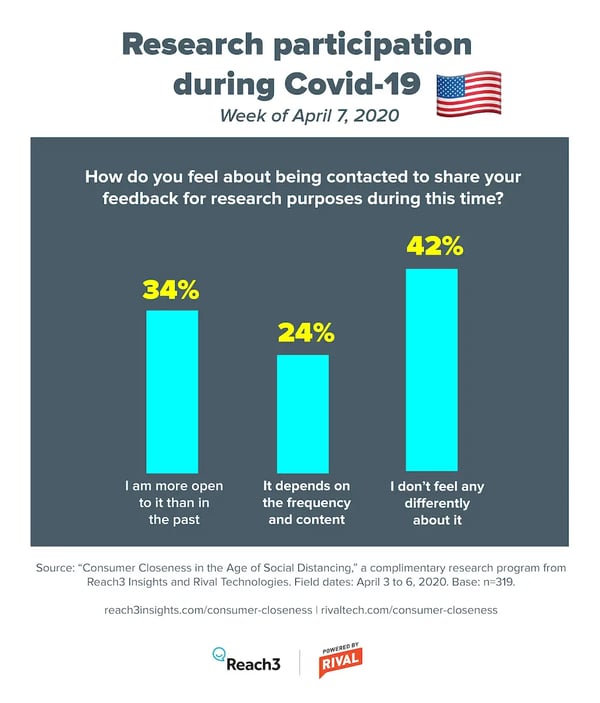.webp)
Some believe that the key to a good interview is asking the right questions. But in truth, that’s only half the battle.
The British TV journalist David Frost, who died in 2013, interviewed kings and queens, Hollywood royalty, presidents and prime ministers. He asked great questions, but his true talent, as a 1990 New York Times story explained, was “being able to put someone so at ease that they practically forget they’re awake.” He peppered interviews with lines like “It’s such a joy to be doing this!” or, “That’s a marvelous observation!” Through a combination of thorough preparation, genuine warmth and casual banter, Frost could get people to say the darnedest things. His most famous interview, a 12-part series with Richard Nixon in 1977, solicited the “I let the country down” line that became the disgraced president’s epitaph.
Whether the questions are asked by a journalist or by a market researcher, the key is showing that it’s not a transactional conversation (What can you give to me? What’s the perfect quote?) but rather a friendly chat in search of meaningful insights. The last thing you want is to get people’s defenses up, put them in “test-taking mode” and receive inauthentic responses.
That’s why how you ask the questions is just as important, if not more important, than what you ask. During turbulent times such as these—with many of us stressed out and on edge—keeping customers close is critical to brand success. But to get customers to engage with us and open up about their real thoughts and feelings, we have to meet customers where they are (increasingly, that's on their mobile devices) and build close relationships through frequent and friendly conversations.
We need to prepare and ask smart questions of each other—but most importantly, we need to listen to each other.
So what exactly does close mean? A lot of marketers and market researchers come at the question of “customer closeness” from strictly a numbers standpoint. They study the transactional data, they monitor customer behavior and see what they’re saying about your brand on social media. But at a time when consumer routines are changing at an unprecedented pace and scale, any data that you have from six months ago—even six weeks ago—is already stale.
We need to acknowledge that very little about how companies capture consumer data actually relates to true relationship building. Brand relationships are not unlike other types of relationships—whether it’s a journalist and her source, or a husband and his spouse, success requires regular dialogue and a recognition that communication is a two-way street. This year, with Covid and the Black Lives Matter movement, has proven the importance of that in a very profound way. We need to prepare and ask smart questions of each other—but most importantly, we need to listen to each other. And given how quickly things are changing, we have to do so regularly and frequently.
One of the interesting things we’ve noticed at Rival Technologies over the past few months is that people have been more, not less, willing to engage with market research since Covid began. Back in March, we launched an insight community in both the United States and Canada to look at how consumers were navigating the pandemic.
In one study, about a third said they were more open to participating in research, while fewer than 1% said they were less open. Admittedly, there’s some self-selection bias here—but still, people want to talk, if you’re willing to listen. “It’s nice that throughout this time there is a small way I can contribute to something—and I don’t mind sharing info, since we are all going through it,” wrote one research participant.
A third of consumers said they were more open to participating in market research during COVID-19, while fewer than 1% said they were less open to it.
When engaging with consumers for marketing or market research purposes, we have to remember that job No. 1 is to put people at ease. How would you open a conversation with your mom, or your best friend Sue? You’d ask, “How are you doing today?” We tried this approach in our own mobile surveys and found that people are receptive to it.

We make it a real conversation. If one answers “just ok,” for instance, our response might be: “Just feeling OK? We hear you. Can you tell us the main reasons you’re feeling this way?” Yes, research participants know they’re talking to a machine, but still, from the tone and language being used, they know they’re not going to be graded on this particular quiz. During a difficult time, it’s a friendly interaction—and as a result, people are more willing to share.
"Smartphone-generated content may offer more diagnostic or accurate insights into consumer preferences."
Conversational surveys (or "chats") sent via SMS, as it turns out, are also where customers are more likely to reveal their innermost thoughts, according to recent research. Shiri Melumad and Robert Meyer, professors of marketing at the Wharton School of Business, noted in a March 2020 article for the Journal of Marketing that tweets written on phones contained 47% more first-person pronouns and 52% more references to family than those written on PCs. “The finding that social media posts and open-ended survey responses produced on smartphones were more self-disclosing,” write the authors, “suggests that smartphone-generated content may offer more diagnostic or accurate insights into consumer preferences."
As the pace of change continues to pick up speed in 2020, we need to be able to keep up with our customers—and keep casual conversation with them wherever they are. The era of the day-long focus group may be gone—but we can still see the faces of our customers, via selfie videos. The opportunities for lengthy in-person interviews—like the Frost-Nixon series, shot over four weeks—is similarly unlikely. But we can still gain insights into customers, and their evolving needs, with daily SMS check-ins.
Nobody knows what the new business normal will ultimately look like, but by asking the right questions—and in the right way—brands have a fighting chance at getting the answers they will need to survive.
A version of this article first appeared on Entrepreneur.com on September 10, 2020. Copyright 2020 by Entrepreneur Media, Inc. All rights reserved.
Subscribe to our blog to receive the latest news, trends and best practices from market research experts.


No Comments Yet
Let us know what you think